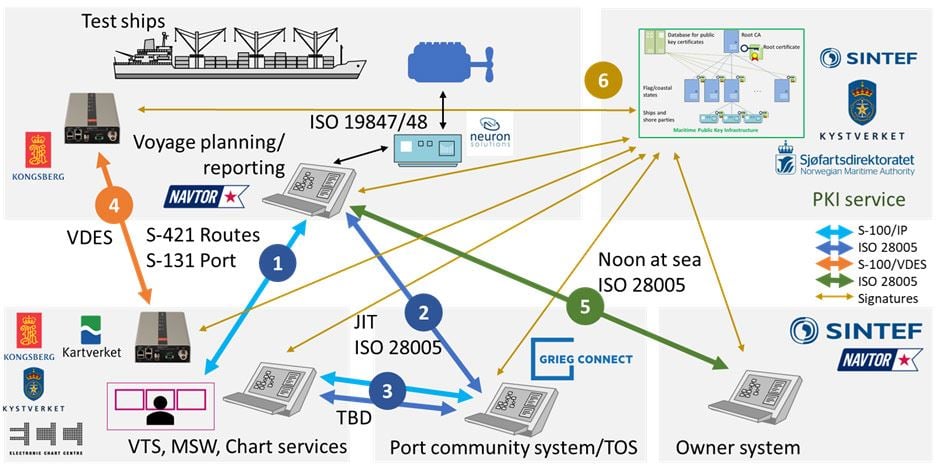The background for the project is that maritime transport is characterized by many different IT systems, both on board the ships, for the various shipping companies and operators, and from the authorities' side. At the same time, maritime transport is international and accounts for approximately 90% of all cargo that is exported.
Sea transport must also be coordinated with hinterland transport to the destination, in those cases where there is not a seaport. New requirements for reporting and more efficient information exchange between the actors require the introduction of new digital solutions that are coordinated internationally.
A more user-friendly digital ecosystem
The vision of the ISTS project is to link maritime transport to existing Intelligent Transport Systems (ITS) by establishing an architecture that will contribute to an interoperable and user-oriented maritime digital ecosystem. This should make it possible for Norwegian industry and authorities to develop new digital services and systems for the worldwide market.
The proposed architecture will be a special case of a generalized IT architecture and will, among other things, consist of these three layers:
• Domain: The definition of the domain and its limitation, including roles representing people, organizations, systems and equipment.
• Processes: The definition of the processes and functions that must be supported to make the domain work.
• Information model: A generalized information model that covers the information elements required by the functions and processes.
The architecture will be based on the following areas:
eNavigation, electronic charts and Maritime Single Window: Integration between public land-based systems and ship systems for safe and efficient navigation.
• Automated ship-to-shore data transfer: This includes automatic emissions reports, voyage and port planning and commercial operations reports.
• Automated port and terminal services: This covers the exchange of digital information between actors in the ports and terminals, ships in port and other actors in the logistics systems. This will also enable a seamless ITS interface to road and rail operations.
• Secure and open data sharing and access: Secure data ownership combined with efficient and cyber-secure data sharing is a critical component for all these services.

The work on the maritime architecture will take place in the following demonstrations:
1,2,3: Information exchange during port calls using IP-based protocols (ISO28005)
4: Information exchange during port calls using VDES
5: Noon reporting
6: Digital signatures
An important part of the project is to communicate the results to the IMO (International Maritime Organization), so that these can be included in the IMO compendium. This contains a large number of related concepts.
Documents
Outcome of demonstrations
User-Centric Development of International Maritime ITS
Introduction to the Maritime ICT Reference Architecture
Onboard Maritime ICT Architecture and Standards
Overview of maritime ICT standards for communication between ships and between ship and shore
Overview of Standardization Activities
ISTS Demonstration Plan
Voyage model, voyage order and voyage performance reports
An outline of an international public key infrastructure for the maritime sector
Partnere:
SINTEF
ITS Norway
Universitetet i Sørøst-Norge
Kystverket
Sjøfartsdirektoratet
Kartverket
Nasjonal kommunikasjonsmyndighet
Electronic Chart Centre (ECC)
Standard Norge
Grieg Connect
NAVTOR
Kongsberg Discovery Seatex
Kongsberg Norcontrol
Neuron Solution


